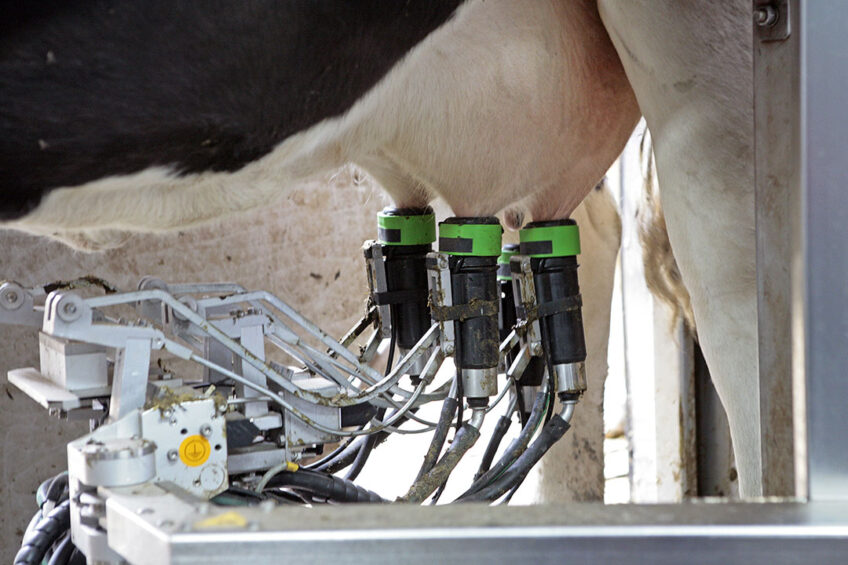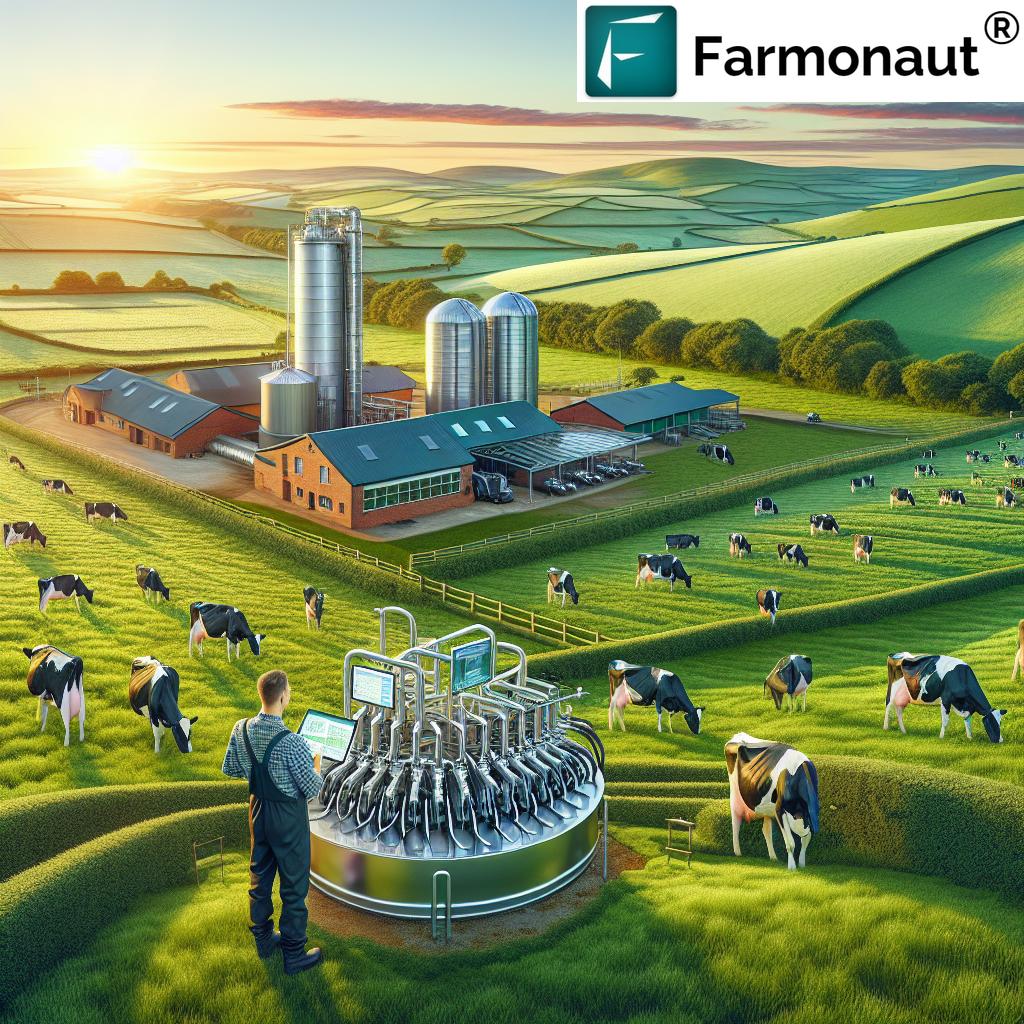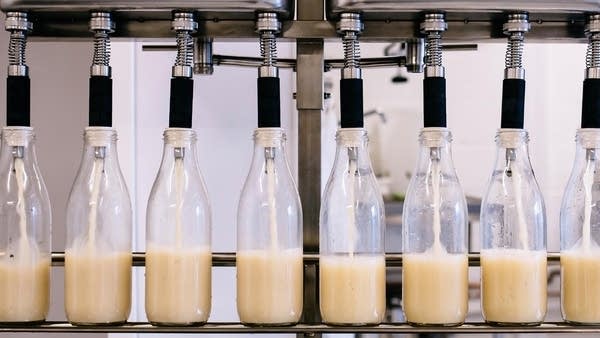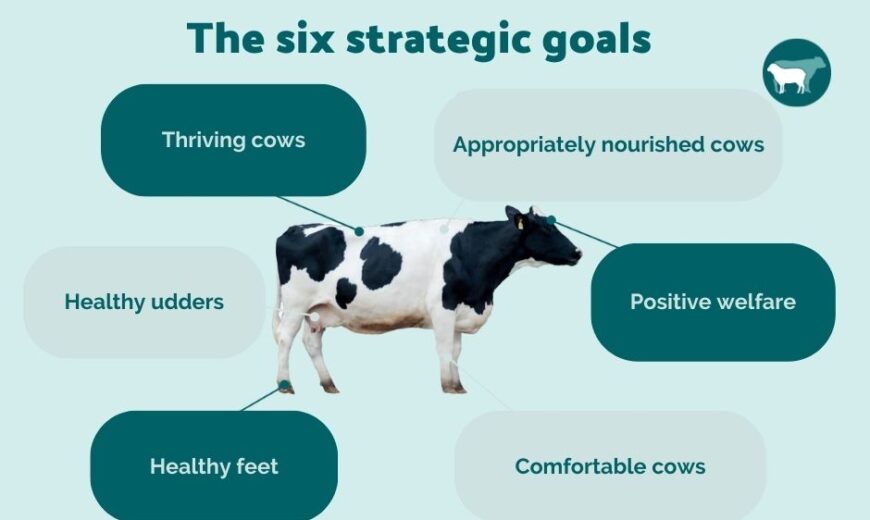The UK Dairy Industry in 2025: Growth,Markets
Introduction
The UK dairy industry stands at a pivotal juncture in 2025, balancing record-breaking production levels with ambitious sustainability goals and evolving global trade dynamics. As the sector navigates challenges such as climate change, shifting consumer preferences, and geopolitical uncertainties, it continues to demonstrate remarkable resilience and innovation. This article delves into the current state of the UK dairy industry, examining its production achievements, sustainability initiatives, market performance, and future prospects. From the pastures of Wales to the processing plants of England, the industry is transforming to meet the demands of a changing world while maintaining its crucial role in the nation’s economy and food security.

Current Production and Market Trends
Record-Breaking Milk Production
The UK dairy sector has experienced a remarkable surge in milk production in 2025. According to the Agriculture and Horticulture Development Board (AHDB), Great Britain milk deliveries reached an estimated 1,186 million litres in May 2025, representing a 5.2% increase compared to the same month last year . Daily deliveries averaged 38.27 million litres, with the spring flush peaking at 39.01 million litres on 4 May—the highest volume ever recorded . This production surge has been driven by favourable weather conditions and supportive dairy economics, with the milk-to-feed price ratio remaining firmly in the expansion zone
Regional and Global Production Patterns
While the UK celebrates increased production, the global picture is more varied. The European Union saw a decline of 0.4% in milk deliveries, though this marked an improvement from the 2.3% losses recorded the previous month . Ireland and Poland continued to demonstrate strong growth, while the United States saw a 0.9% increase, and Argentina’s production recovered impressively with a 15.9% rise compared to 2024 weaknesses . These regional variations highlight the complex interplay of factors affecting dairy production worldwide, from disease outbreaks like Bluetongue virus to weather patterns and economic conditions.
Structural Changes and Challenges
Declining Herd Numbers and Farm Consolidation
Beneath the surface of record production figures lies a concerning trend of declining herd numbers. As of 1 April 2025, the GB milking herd stood at 1.62 million head, a decrease of 0.9% year-on-year and the lowest April figure ever recorded . This paradox of increasing production from fewer animals speaks to remarkable improvements in efficiency and productivity per cow but raises questions about long-term sustainability. The number of dairy farmers continues to decline, with 440 producers (5.8%) leaving the industry between April 2023 and April 2024, reducing the total number in Great Britain to 7,130 . Some analysts predict this trend could accelerate, potentially reducing the critical mass of GB dairy producers to between 5,000 and 6,000 within the next two years .
Changing Calving Patterns and Herd Management
The industry is also witnessing significant changes in calving patterns. The share of GB farms running block calving systems has risen to 19.6%, while all-year-round systems remain steady at around 35% . Autumn block calving specifically increased by 1.8 percentage points from 2021 to 7.2% of total farm numbers in 2024 . These changes are exaggerating the peaks and troughs in the seasonal production profile, creating both challenges and opportunities for processors and markets. Additionally, the UK dairy sector has achieved an impressive 84% uptake of sexed semen, leading the global market in this technology .
Sustainability Initiatives and Environmental Stewardship
The Dairy Roadmap: A New Phase of Collaboration
July 2025 marked a historic step forward for sustainability in the UK dairy sector with the expansion of the Dairy Roadmap initiative. Originally launched in 2008 as the Milk Roadmap, this program has become one of the world’s most successful cross-industry dairy sustainability initiatives . The new phase brings together the full dairy value chain—including farmers, processors, retailers, foodservice, and wholesale organisations—under one governance structure . This coalition has committed to reducing emissions, protecting and enhancing nature, safeguarding animal welfare, and supporting the UK Government’s net zero commitment while maximising social and economic benefits for the sector .
Progress and Targets
The Dairy Roadmap has set specific, evidence-based targets across multiple environmental domains:
- Water: Aiming for no serious pollution incidents, compliance with Farming Rules for Water, and sustainable water usage .
- Climate Change and Energy: Working to limit global warming to 1.5°C and achieve zero contribution from the dairy sector to global warming by 2050 .
- Waste & Recycling: Targeting reuse or recycling of all non-natural waste, with zero waste to landfill .
- Biodiversity: Committed to improved biodiversity on dairy farms .
Notable achievements to date include 65% of dairy-managed farmland participating in environmental stewardship schemes, 40% of energy used on dairy farms coming from renewable sources, and more than 80% of dairy farmers calculating their carbon footprint and working to reduce emissions .
Trade Dynamics and Export Growth
Shifting Patterns in International Trade
The UK dairy industry has demonstrated remarkable performance in international markets during 2025. Total UK dairy export volume for the first half of 2025 increased by 2.5% to 688,800 tonnes, while value surged by 20% to reach £1.1 billion . This export growth has been fueled particularly by cheese, milk, cream, powders, whey, and whey products . Quarterly exports of cheese and curd reached their highest level in five years, while milk and cream exports hit a three-year high .

Regional Export Focus
The European Union continues to constitute approximately 90% of total UK dairy exports, with Ireland, the Netherlands, France, Belgium, Germany, and Poland remaining major recipients . However, interesting shifts are occurring within these patterns. While exports to Ireland declined by 11% to 221,000 tonnes in Q1 2025, exports to France increased by 30% to 10,000 tonnes, and Germany saw an impressive 80% increase to 5,400 tonnes . Beyond the EU, exports to non-EU nations have shown significant growth, particularly to countries in Asia and the Middle East-North Africa (MENA) region .
Table: UK Dairy Export Performance (H1 2025)
| Product Category | Volume Change | Key Destination Markets |
|---|---|---|
| Milk Powders | +28.3% | Algeria, Pakistan, Malaysia, Egypt |
| Whey & Whey Products | +26.6% | EU nations, New Zealand, United States |
| Butter | +9.5% | Multiple global markets |
| Cheese & Curd | -0.7% | EU nations, MENA countries |
Market Performance and Consumer Trends
Retail Dynamics and Product Performance
The UK dairy market continues to demonstrate resilience in the face of changing consumer preferences and economic pressures. During the 52 weeks ending 17 May 2025, volumes of cow’s dairy declined by 1.0% year-on-year, while spending increased by 3.0% due to a 4.0% growth in average prices . Category performance varied significantly:
- Cow’s milk: Volumes decreased by 2.4%, with spend declining by 2.1% .
- Cheese: Remained in volume growth, up 3.4% year-on-year, with cheddar (representing 41.5% of all cow cheese volumes) seeing a 4.3% increase .
- Butter: Experienced a 2.3% decline in volume but a 5% increase in spend .
Plant-Based Alternatives and Changing Preferences
The UK Dairy Products & Eggs market, with revenue amounting to US$27.15 billion in 2025, is expected to grow annually by 6.46% (CAGR 2025-2030) . However, this market now includes significant competition from plant-based alternatives. Consumers in the United Kingdom are showing growing interest in plant-based dairy alternatives, driven by concerns over animal welfare, sustainability, and health considerations . This trend is particularly prominent among younger generations, leading food companies to innovate and offer a wider range of non-dairy options .
Challenges and Future Outlook
Navigating Multiple Headwinds
The UK dairy industry faces several significant challenges as it moves forward:
- Climate and Weather Volatility: Unprecedented changing weather patterns are creating warmer, wetter, and more extreme conditions that impact forage quality, yields, and overall utilisation of low-cost feed . The June 2025 heatwave raised concerns about forage stocks for later in the year .
- Legislative Changes: Producers must adapt to new regulations, including slurry store cover legislation coming into force in 2027, all-Wales Nitrate Vulnerable Zone rules, and milk contract regulations that required compliance by July 2025 .
- Trade Uncertainties: Recent announcements regarding tariffs by US President Donald Trump have sent ripples through global trade markets, though a new US/UK trade deal may help mitigate impacts .
- Labour Shortages: The industry continues to face labour challenges that threaten food security and operational efficiency .
Future Prospects and Strategic Directions
Despite these challenges, the UK dairy industry remains fundamentally strong and innovative. The year ahead looks buoyant for those who remain in the industry, with demand for high-quality milk products, investment by major processors, and rising milk prices . Strategic priorities for the future include:
- Investing in Resilience: Adapting to future conditions will require investment in housing, tracks, grazing infrastructure, rainwater separation, and heat stress mitigation .
- Embracing Sustainability: The industry-wide commitment to the Dairy Roadmap and new initiatives like the Dairy Carbon Network demonstrate determination to address environmental challenges .
- Market Diversification: While the EU remains the dominant export market, opportunities in Asia, MENA countries, and other emerging markets offer potential for growth .
- Value-Added Products: Focus on specialty cheeses, protein-rich products, and innovative offerings that respond to consumer trends .
Table: The Dairy Roadmap Sustainability Targets and Progress
| Area | Targets | Progress |
|---|---|---|
| Climate & Energy | Zero contribution to global warming by 2050 | 40% of energy from renewable sources on farms |
| Water | No serious pollution incidents; sustainable usage | 20% increase in water efficiency for processors |
| Waste & Recycling | Zero waste to landfill | 1.3% of inputs lost as food waste |
| Biodiversity | Improved biodiversity on dairy farms | 65% of dairy farmland in environmental schemes |

Conclusion
The UK dairy industry in 2025 presents a picture of resilience, innovation, and adaptation. While facing significant challenges from climate change, structural shifts, and market uncertainties, the sector has demonstrated remarkable ability to evolve and thrive. Record production levels, growing export values, and ambitious sustainability initiatives all point to an industry that is proactively shaping its future rather than simply reacting to external pressures.
The collaborative spirit embodied in the expanded Dairy Roadmap initiative, bringing together farmers, processors, retailers, and foodservice organizations, provides a strong foundation for addressing the complex challenges ahead. As consumer preferences continue to evolve and global markets shift, the UK dairy industry’s commitment to quality, sustainability, and innovation will be crucial to maintaining its competitive edge and ensuring long-term viability.
For further information about the UK dairy industry and its initiatives, explore these resources:
- AHDB Dairy Market Reviews
- The Dairy Roadmap
- Dairy UK
- WWF-UK Report on Sustainable Dairy Farming
- https://sjxsm.shop/the-ultimate-guide-to-work-in-the-uk/
The journey ahead will require continued adaptation, investment, and collaboration, but the UK dairy industry has demonstrated its capacity to meet these challenges and seize opportunities in an increasingly complex global marketplace.

